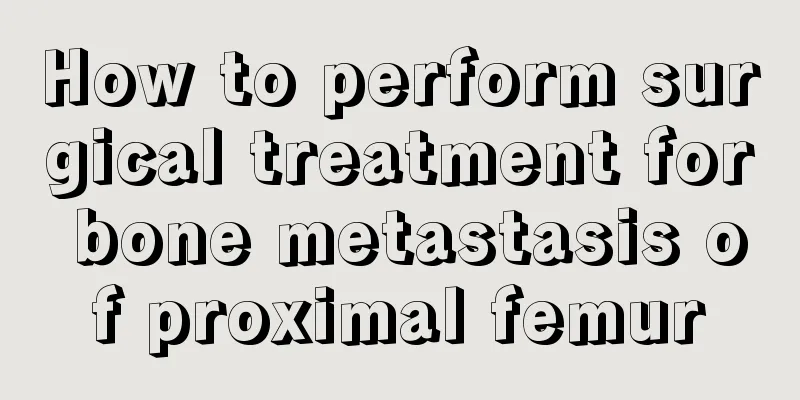What are the best treatments for big toe paronychia?

|
How to treat paronychia of the big toe? In fact, there are different methods. Now conservative treatment is also a method chosen by many people. It mainly refers to the timely use of antibiotics in the early stage. However, if suppuration has occurred and conservative treatment is ineffective, then you should follow the doctor's advice for surgical removal. 1. The treatment of acute paronychia is relatively easy. Only general antibiotics are needed in the early stage. However, if the pustule has formed, it is necessary to puncture the pustule first and then give antibiotic treatment. If the treatment is delayed, the bacteria will invade the nail bed from the side of the nail groove, which may cause the nail to fall off in severe cases. If the doctor recommends it after consultation, a wedge resection surgery can be performed. After local anesthesia is given near the diseased nail, the flesh will be cut open to completely remove the nail embedded in the flesh. 2. The treatment of chronic paronychia is more complicated. In addition to the use of water-based steroids in combination with antifungal agents and bactericides, antibiotics can be added for treatment during acute attacks according to the culture of the bacteria that breed. However, because these bacteria sometimes only exist opportunistically and are not the main culprit, some bacteria can be left untreated. If treated with topical bactericides or antifungal agents, treatment must be continued for at least three to four months. During treatment, hands should be kept dry and gloves can be worn when necessary. However, rubber gloves should never be worn in high temperatures for too long. Irritation caused by sweating will worsen the symptoms of paronychia. If you have to touch water and it is inconvenient to wear gloves, you can try to apply vaseline to the nail groove to prevent irritants in the water from entering. At the same time, avoid direct contact with fresh fruits, especially citrus fruits. If there are other skin lesions on the hands at the same time, they also need to be treated together to avoid affecting the efficacy. 3. Friends who suffer from paronychia should pay attention to choosing shoes that are comfortable and loose; cut toenails frequently, into an arc shape, and do not leave toenail tips on both sides of the nail groove; pay attention to the maintenance of fingers, apply some skin care cream after washing hands, and enhance the disease resistance of the skin around the nail groove; do not pull out hangnails at will, and once a hangnail appears, use scissors to cut it, and never pull it out forcefully; nails should not be broken easily, and small wounds on fingers should be treated in time to avoid infection; at the same time, if paronychia occurs, it is best to use nail ingrown cream, apply it directly, and the skin will automatically absorb it, which is suitable for paronychia. 4. When cleaning your hands, do not use sharp objects such as toothpicks to clean the nail groove or trim the nail cuticle without permission, as this may easily enlarge the wound and cause further damage. For stubborn hypertrophic chronic paronychia, surgical removal of the swollen part can be attempted as a treatment. |
<<: Does folliculitis itch? How to deal with it?
>>: What are the symptoms of intestinal flora imbalance?
Recommend
Will I have stomach pain during ovulation?
Women always experience different body pains, esp...
What to do if the eyeball is congested
Eye congestion mainly refers to redness of the wh...
Facing uterine cancer with confidence
Liu Mei is 33 years old and works in a middle sch...
What to do if you eat durian and drink alcohol
Although durian is a fruit that is very beneficia...
The little toe of my foot hurts when I walk
When we walk, we often find that the little toe o...
How to remove odor from a new refrigerator
Refrigerators are household appliances that every...
Patients with gallbladder cancer should eat more carrots
Patients with gallbladder cancer should eat more ...
Reasons why venous blood turns black
Veins are very important blood vessels in the hum...
What are the symptoms of skin cancer
The incidence of skin cancer in my country is ver...
Characteristics of large-grain white sugar
There are many types of white sugar, and they are...
Symptoms of post-traumatic stress disorder
In life, many people always have a lot of yearnin...
Does pancreatic cancer run in the family?
Pancreatic cancer is a highly malignant tumor wit...
What fruits are good for kidney stones?
Patients with kidney stones should of course pay ...
Can I use tea on my face to remove acne? How to get rid of it?
Tea is an indispensable beverage in life because ...
How long can you live with prostate cancer? How to treat prostate cancer?
For patients with advanced prostate cancer who ha...









